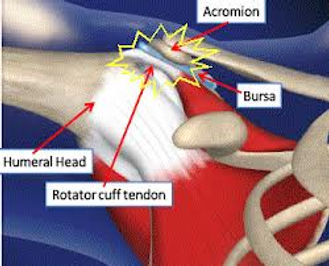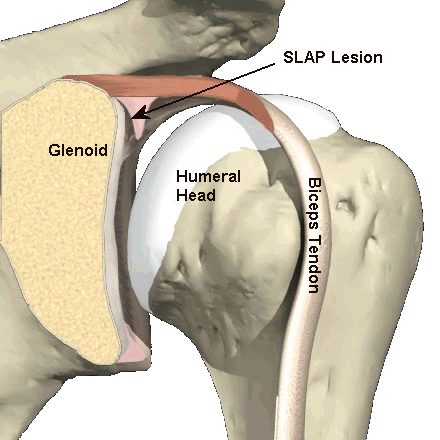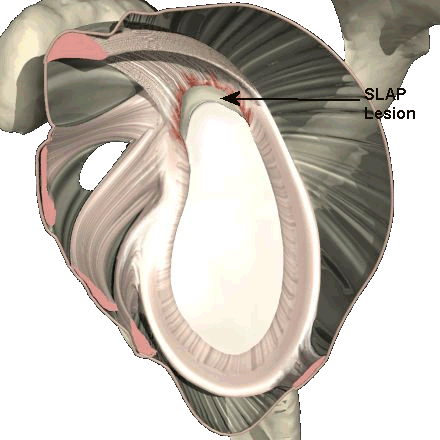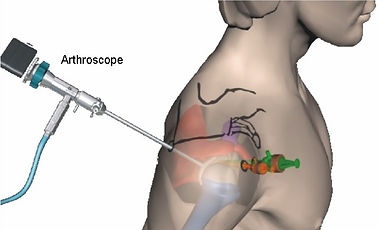Conhecendo um pouco das patologias que acometem a região do ombro

Ombro Congelado
Várias causas de dor nos ombros causam incapacidade funcional do braço, mas acredito que a que cause por tempo mais prolongado seja a Capsulite Adesiva ou Ombro Congelado!!!!! Esta patologia ocorre devido uma inflamação da cápsula que envolve a articulação do ombro (como se fosse uma bexiga que contem a articulação e seu liquido de lubrificação), e esta inflamação ainda não há causa bem estabelecida para seu aparecimento...podendo ocorrer durante tratamento se tendinites, pós cirurgias e pós traumas no ombro, mas também aparece do nada!!!! Acomete mais mulheres acima dos 40 anos e cursa com MUITA dor no ombro e limitação IMPORTANTE dos movimentos. Está relacionado com usp de medicações controladas e Diabetes, mas não de forma definida, e seu tratamento inclui utilização de medicações analgésicas e anti-inflamatorios, fisioterapia e em até cirurgias...porém o mais importante é realizar um diagnóstico precoce...e ter paciencia, pois é uma doença que pode levar meses até seu pleno estabelecimento...

Calcificação nos Tendões do Ombro
Doença conhecida com Tendinite Calcárea, caracterizada pela presença de depósito de cristais cálcio na região interna dos tendões que movimentam o ombro (manguito rotador), doença causada por um processo inflamatório que evolui para esta calcificação (sem causa totalmente definida) leva para um quadro clínico de dor intensa ,de inicio rápido, durante movimentação do ombro e, em repouso também, que leva ao paciente não mexer o ombro. O tratamento inicia-se com utilização de medicação para aliviar à dor e fisioterapia, por vezes este tratamento não resolve o problema e o paciente deve ser submetido ao tratamento cirúrgico, realizado por artroscopia (cirurgia com auxilio de câmera!!!). No quadro inicial de fortes dores no ombro de maneira rápida, sempre deve-se procurar o ortopedista para um correto diagnóstico e tratamento.

Dor no Ombro.... O que eu tenho??? ...BURSITE
Um dos locais de grande aumento de queixas, no consultório de um ortopedista, é a DOR NO OMBRO. Diversas patologias acarretam dor no ombro, região do músculo Deltoide e Trapézio, e podem ter todas origens no ombro!!!!! Por isso para saber a origem desta dor uma história desta patologia, com tempo de aparecimento, localização, quando tem dor, se existe um antecedente de trauma, ou se algo á acarreta, é de extrema importância para a descoberta da causa desta dor e realização de tratamento. Pessoas que apresentam dor no ombro de inicio espontâneo, com dor á elevação do braço, sem formigamento, que piora com atividade física, e apresenta dor noturna, muito provavelmente apresentam quadro de Inflamação dos Tendões do Manguito Rotador, principalmente do tendão que eleva o braço (supra-espinhal), e a principal causa desta inflamação é a Síndrome do Impacto. Esta síndrome é causada pelo trauma de repetição entre o tendão que eleva o braço (supra-espinhal) com a parte inferior do osso que faz o contorno do nosso ombro (acrômio), causando dores muito fortes ,e muitas vezes incapacitantes. Entre este tendão e este osso, existe um bolsa de proteção (bursa), na tentativa de evitar grandes trauma, por este motivo o processo inflamatório deste tendão vem acompanhado da famosa BURSITE...Normalmente o tratamento é realizado com repouso, uso de medicação anti-inflamatória e fisioterapia, mas infiltrações e até cirurgia podem ser realizados em casos extremos.








Lesão do Manguito
A articulação do ombro possui um arco de movimento muito amplo, que ocorre devido as características de sua articulação e presença de um grupo muscular que envolve a parte superior do úmero (osso do braço). Este grupo muscular é chamado de Manguito Rotador, sendo que os tendões destes músculos prendem na cabeça umeral. Formado pelos músculos Sub-escapular, Supra-espinhal, Infra-espinhal e Redondo menor, são estes músculos que permitem uma grande mobilidade realizada pelo ombro. Devido ao excesso de movimento, traumas ou degeneração pelo tempo, os tendões do manguito podem sofrer rupturas, onde o paciente apresenta : Dor á mobilidade do ombro; Dor noturna; Perda de força em determinados movimentos do ombro. Estas lesões são diagnosticadas por ultrassonografia ou ressonância magnética, sendo esta última melhor para avaliar o tamanho da lesão e comprometimento do tendão. As lesões do manguito podem ser tratadas não cirurgicamente (lesão parciais pequenas ou quando o paciente não apresenta condição clínica de ser operado) ou cirurgicamente (melhor tratamento na grande maioria das lesões), por isso ao realizar o diagnóstico de LESÃO DO MANGUITO, deve-se procurar um cirurgião de ombro e cotovelo para orientar o melhor tratamento.
O que é SLAP???
A articulação do ombro é formada principalmente pela área que compreende o osso do braço (úmero) e uma parte do osso da escápula (glenóide), esta articulação é chamada de gleno-úmeral. A glenóide apresenta uma "moldura" chamada LABIO OU LABRUM GLENOIDAL, onde prendem os ligamentos do ombro, e na sua porção superior fixa o tendão do cabo longo do bíceps. A lesão nesta região superior do labio glenoidal junto à inserção do cabo longo do bíceps é chamada de SLAP. Normalmente é uma patologia de pacientes jovens que realizam atividade física e apresentam dor no ombro que irradia para o braço, e seu diagnóstico é feito com a realização de uma ARTRO-RESSONÂNCIA. Está patologia apresenta 4 graus, e deve ser tratada de acordo com estas classificações, podendo ser tratado com medicação e fisioterapia e até com necessidade de cirurgia.
Artroscopia no Ombro
O que é artroscopia??? Artroscopia é um método cirúrgico que permite ao médico cirurgião ortopédico diagnosticar e tratar lesões das articulações, de maneira pouco invasiva. A artroscopia no ombro é realizada para o tratamento de várias lesões que acometem os tendões (manguito), ligamentos (luxações) e cartilagem (artrose). Realizada com o auxilio de uma câmera (artroscópio) e instrumentos de artroscopia (shaver, ablação, âncoras, etc...) que entram na articulação do ombro por pequenas incisões, chamadas de portais, que permitem uma ampla visualização da articulação e a possibilidade de tratar um grande número de doenças do ombro (não utilizado na colocação de próteses e tratamento de grandes fraturas), com menor agressão à articulação e estruturas que à envolvem (músculos, ligamentos, tendões, etc...). Quando o paciente apresentar patologia no ombro que esteja indicado o tratamento por artroscopia, esta técnica cirúrgica muitas vezes é indicada.
Meu Ombro Desloca!!!
Quando o ombro desloca chamamos de Luxação do Ombro, e quando isto ocorre repetitivamente chamamos de Luxação Recidivante do Ombro. Está patologia ocorre principalmente em indivíduos jovens e a forma inicial de trata-lá é colocar o ombro no lugar. O tratamento definitivo depende se o ombro deslocou de forma espontânea (SEM TRAUMA) ou após um forte trauma, pois na forma espontânea podemos tratar sem cirurgia, já na forma traumática a chance de manter o deslocamento do ombro é muito grande e deve ser tratado cirurgicamente na maioria dos casos. A idade é outro fator, pois quando mais jovem o ombro desloca, maior a chance de continuar deslocando, por isso deve ser tratado logo no primeiro episódio que isto ocorrer.
Fratura no Ombro
As fraturas que acontecem o ombro ocorrem na região de cima (proximal) do úmero (osso do braço), ocorre principalmente em pessoas de idade (maiores de 65 anos) com quedas da própria altura, ou em pacientes jovens ocorre em traumas de alta energia (mais violentos), como acidentes automobilísticos. Seu tratamento depende do quanto as partes da fratura estão desviadas (separadas), e pode ser feito de maneira não cirúrgica ou de maneira cirúrgica, com colocação de pinos metálicos, placas ou até mesmo necessitar de colocação de uma prótese, o mais importante é seguir as orientações médica para melhor tratamento e evolução desta fratura..
Artrose no Ombro
Artrose é uma patologia muito frequente em pessoas acima dos 65 anos, também pode ocorrer no ombro. Como o ombro é uma articulação que não "carrega" nosso corpo (como joelho e quadril), ela apresenta uma incidência menor desta patologia, porém quem sofre ou sofreu de artrose no ombro sabe o quanto esta doença é incapacitante. O tratamento para a artrose do ombro é a realização de uma PRÓTESE, que nada mais é que uma substituição da articulação natural por uma mecânica, porém existem vários tipos de prótese que podem ser realizadas, procure um especialista para identificar a causa do desgaste e indicar a melhor prótese para seu caso.
Minha Clavícula Saiu do Lugar
Na verdade a clavícula contínua na mesma posição, porém o seu ombro é que está mais baixo, isso ocorre quando temos uma queda sobre o ombro ou com trauma direto na região de cima do ombro, ocorrendo uma patologia chamada de LUXAÇÃO ACRÔMIO-CLAVICULAR!!! Ocorre a incongruência entre a clavícula e o acrômio (osso que dá o contorno do nosso ombro!!!), e esta incongruência ocorre pois há uma contusão ou ruptura dos ligamentos que unem a clavícula ao ombro. Paciente evolui com muita dor no ombro, principalmente a elevação e nos estágios mais graves apresenta uma deformidade, como se a ponta da clavícula estivesse elevada. Apresenta mobilidade na clavícula (sinal da tecla), e desaparece a deformidade quando elevamos o ombro em direção a clavícula. O tratamento depende da gravidade da incongruência da articulação entre a clavícula e o acrômio, podendo ser tratado sem a necessidade de cirurgia (uso de tipóia) ou com cirurgia nos casos mais graves....ao menor sinal desta patologia procure um ortopedista. O diagnóstico é realizado com o exame clínico e radiografias do ombro.
